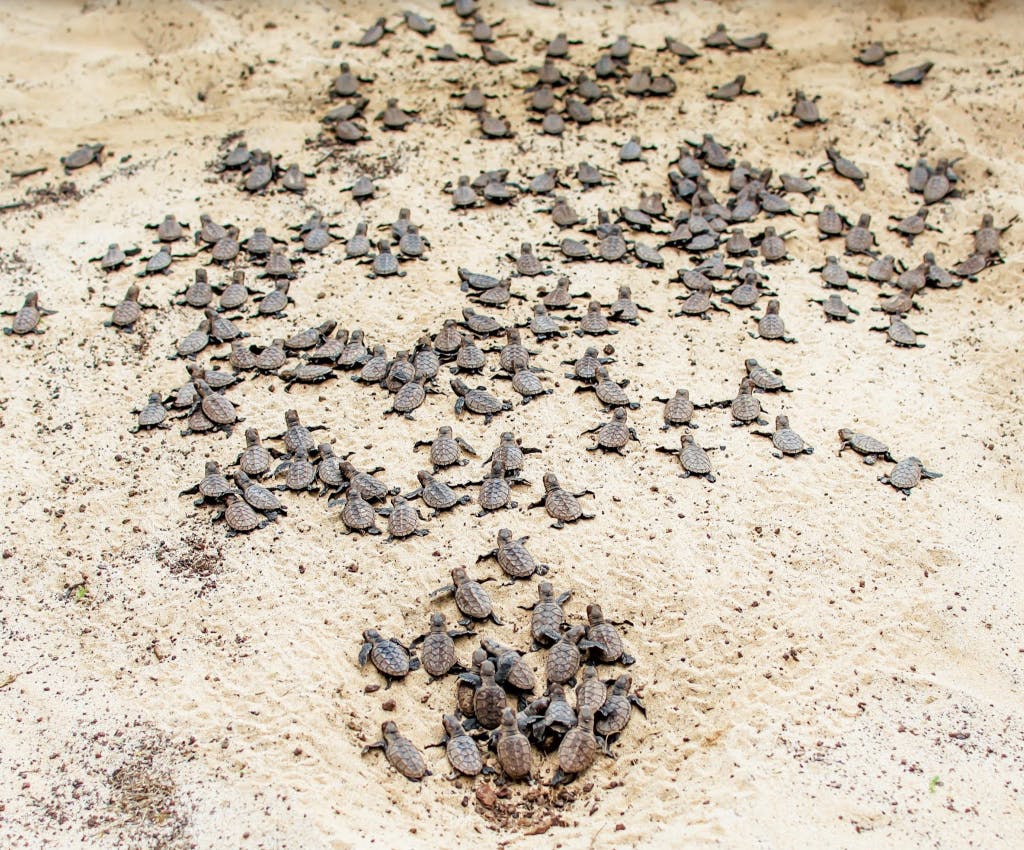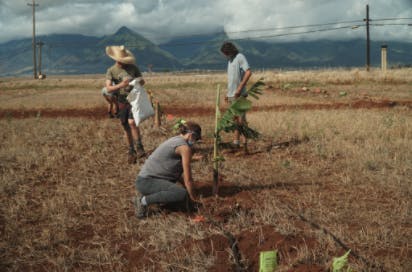Work Underway to Protect Endangered Hawksbill Sea Turtles on Maui

The Hawai‘i Wildlife Fund, US Fish & Wildlife Service and Mahi Pono are working together to ensure the safety and protection of endangered hawksbill turtles, also known as honu ‘ea or ʻea, that nest along the shoreline in Mā‘alaea fronting North Kīhei Road.
In collaboration with community-based groups, including the Mā‘alaea Village Association, these organizations are working to repair or replace fencing along the shoreline that is essential to ensure that the endangered turtles do not wander into traffic on the busy North Kīhei Road as they search for a safe place to lay their eggs. The fence also protects the sand dunes and vegetation that are critical to the area’s shoreline habitat and serve as natural erosion buffers. This stretch of beach is essential nesting habitat for honu ‘ea.
“We have seen an uptick in vandalism to the fence – we continually work to repair it only to find that it has been vandalized again”, said Hannah Bernard, executive director of HWF. “We are also observing more vehicles driving on to the beach in areas where the fence has been damaged. This is a major safety issue for the turtles, beachgoers and the environment.”
Fence repair underway in Mā‘alaea fronting North Kīhei Road. PC: courtesy Hawai‘i Wildlife Fund, US Fish & Wildlife Service and Mahi Pono.
The first systemic monitoring and research of the honu ʻea on Maui began after the two egg-laden hawksbills were killed by cars while trying to cross North Kīhei Road in 1993 and 1996 along with numerous hatchlings killed in subsequent years. This tragedy spurred HWF’s launch of its Hawksbill Recovery Project in partnership with USFWS.
The project includes volunteers who patrol the beaches at dawn, and conduct night patrols and hatchling watch. The volunteers also participate in the construction, maintenance, and repair of the dune fence to help keep turtles off the road and to support the recovery of the eroded dune habitat.
“We are lucky to live on an island with so many beautiful beaches, beaches that we share with our wildlife,” said Bret Wolfe, Keālia Pond National Wildlife Refuge manager. “Honu ‘ea nest primarily on the islands of Maui, Hawai‘i, and Moloka‘i. The fence helps protect the honu ʻea as they try to find a safe place to nest and lay their eggs. We are commited to working with our partners to maintain the fence and protect honu ʻea.”
The fence covers an approximately 1.5 mile stretch of shoreline from the Keālia Resort in North Kīhei to Haycraft Park in Mā‘alaea known as the Keālia Coastal Strand and is located on an area of land owned by Mahi Pono. There are multiple designated public access points along the length of the fence line to the shoreline. The fence does not limit or prevent access to the beach, it only prevents turtles from being able to cross the road and be hit by cars.
Fence repair underway in Mā‘alaea fronting North Kīhei Road. PC: courtesy Hawai‘i Wildlife Fund, US Fish & Wildlife Service and Mahi Pono.
“Mahi Pono is proud to be part of this collaborative effort to help protect the safety of the hawksbill turtles,” said Shan Tsutsui, COO of Mahi Pono. “We are in the process of executing the renewal of a Memorandum of Understanding with USFWS that will allow for continued access to the parcel of land for conservation management activities, which includes the installation and maintenance of the fence to protect both the turtles and the shoreline.”
As managers of the adjacent Keālia Pond National Wildlife Refuge, USFWS has worked in collaboration with Mahi Pono, and the previous land owner, to help conserve the coastal strand habitat that is essential nesting habitat for the honu ‘ea. Keālia Pond is host to approximately 30 species of birds, including migratory waterfowl and home to the endangered aeʻo (Hawaiian stilt) and ʻalae keʻokeʻo (Hawaiian coot). The refuge has walking trails and a coastal boardwalk located in Maui’s largest lowland wetland and is one of the last remaining wetlands in Hawaiʻi.
MORE IN NEWS
Mahi Pono Plants 300 Native Trees for Statewide Tree Planting Day
